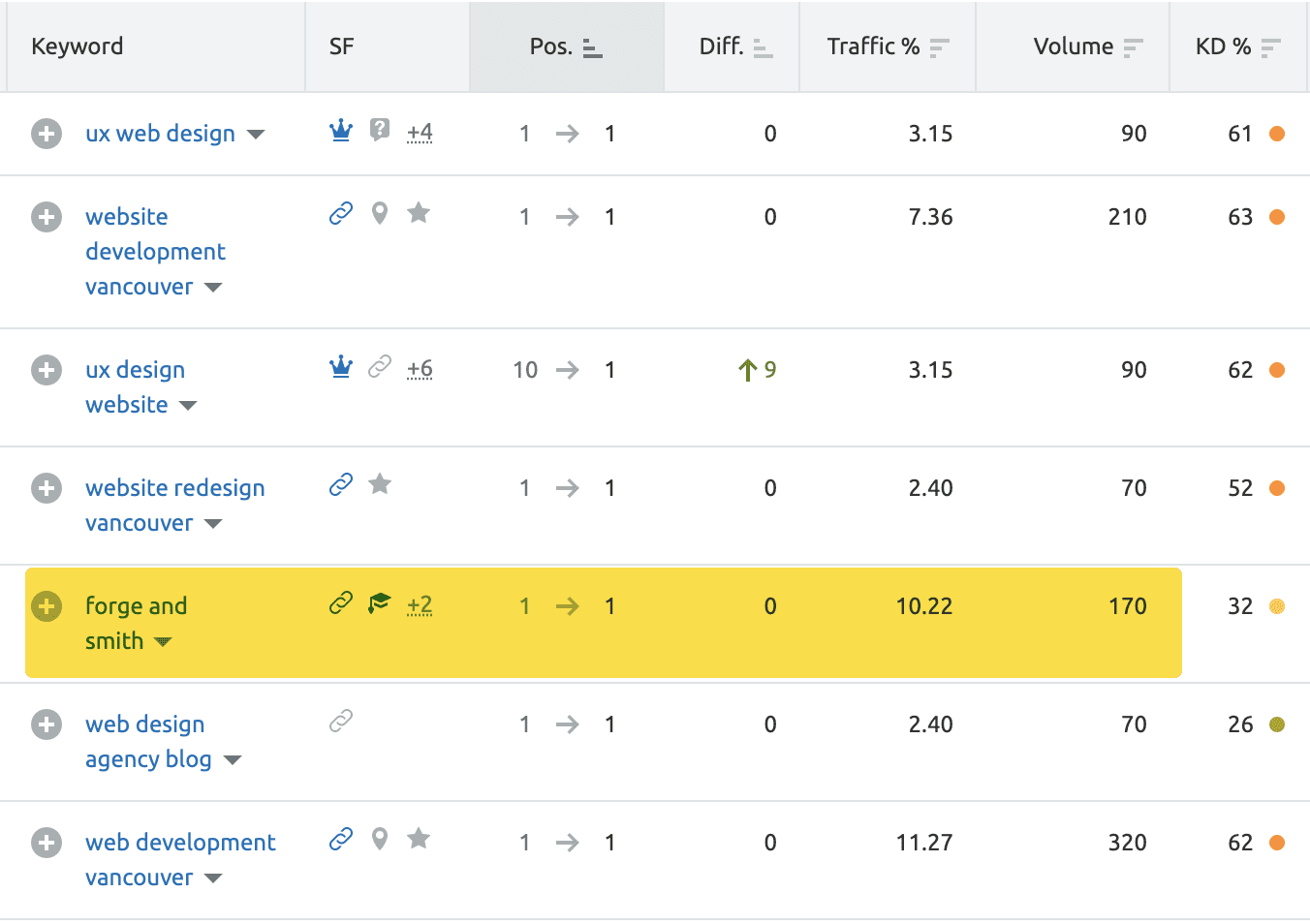This article was updated on August 7th, 2021.
One of the biggest complaints we hear from our clients is that it’s hard to see (or prove) the value of digital marketing strategy. It uses up a lot of time and resources, and it’s hard to justify putting any budget into it – especially for small businesses. Isn’t having a user-friendly website with your story and offerings enough? Do you really need to invest in digital marketing?
That would be an emphatic “yes”! We’ll give you 12 great reasons why it’s essential for business growth.
Post Contents
Why invest in digital marketing strategy?
Your website can’t promote itself. It’s like a helpless little digital baby, and it needs you to give it constant care so it can grow and, in turn, grow your business.
If your goal is to generate leads, make sales, and build awareness about your company, there is regular work you need to put into your website and other digital assets. But rather than think of them as tasks (aka more tedious work), think of each item in your strategy as an investment back into your business.
Each dollar and minute you invest in digital marketing strategy has a clear ROI that impacts your bottom line. The best part is that all of these moving pieces work together, boosting the impact of one another. Let’s take a look.
The ROI of SEO
We often hear alarming statements like “don’t you just do SEO once and it’s done?”, or “we did SEO a couple of years ago, so we’re good”. Here’s the scariest: “we don’t need SEO, it doesn’t matter in our industry”.
Just because you launch a website, doesn’t mean search engines have to show it to people.
Google doesn’t owe you anything! There are over 1.8 billion websites on the World Wide Web – you’re a speck of dust in that universe. To stand a chance of being found by potential customers, you need to meet search engines’ ever-changing requirements in areas like security, quality, freshness, authority, speed, and user experience.
That comes down to including SEO in your digital marketing strategy.
There are two kinds of SEO that should get regular attention: technical SEO (relating to your website as a whole) and on-page SEO (relating to individual content). If you stay on top of optimization, here are the benefits you can expect:
1. Improved position in search results
SEO is what earns you points for different ranking factors – which tell search engines how to position your page among hundreds of thousands of others on the same topic.
SEO efforts also encourage regular crawling and re-indexing of your website by search engines like Google, Bing, Yahoo, DuckDuckGo, Ecosia, and more. Every crawl is a chance to rise to a better position, and edge out your competitors for the searches your target customer is doing.
Without SEO, your site can live forever out in the boonies on page 32 of search results. You can imagine how many searchers venture that far.
2. Increased traffic
A better position in the SERPs often means more traffic. And more traffic = more potential for conversions!
If your conversion rate is 5%, think about it this way: 5% of 3,000 monthly visitors is a lot better than 5% of 300 monthly visitors. SEO helps you target the right audience and bring them to your site.
3. Better user experience
Technical SEO involves regularly conducting website SEO audits, analyzing the results, and implementing fixes. This includes areas like redirects, duplicate and thin content, mobile usability issues, site security, and page speed, which all contribute to a stronger experience for each visitor to your site.
And guess what? Search engines now weigh user experience data heavily into your ranking – which impacts your traffic. It’s all related!
The ROI of Content Marketing
The words ‘content marketing’ get the biggest groan from many businesses we talk to. Here are three common reasons companies tend to think content marketing is pointless:
- It’s “just blogging”
- Blogging is only for foodies, travel, and Millennials trying to invent themselves as a brand
- You tried it and didn’t see any results
Content can be all kinds of things besides a blog – although we’re obviously big fans of the business blog here at Forge and Smith. It’s about finding the medium(s) that your audience most enjoys and creating that kind of content: videos, podcasts, infographics (here’s how to make your own infographics!), research papers, studies,… the list goes on.
But business blogs have great ROI, too. Half of the top 200 Fortune 500 companies have a corporate, creative, or culture-focused blog.
And if you didn’t see any results from your content marketing, there’s a good chance you either pulled the plug too early, or you weren’t doing it right. It can take a year or longer to see content marketing ROI, and it’s important to stay consistent!
Got content marketing problems? Read 7 Ways to Tell if Your Content Marketing is Working (and How to Fix It)!
Good content marketing keeps your website fresh in the eyes of search engines, showcases your expertise, and lends authenticity to your branding. Instead of stressing about six hours spent writing a post, think about the awesomeness you can get back from that six hour investment:
4. Keyword optimization
Website content gives you a place to do all that on-page SEO, and work on improving your position in search results for specific terms and phrases.
Creating content around your keywords, topic clusters, and the right search intent will make it easy to do your SEO tasks. Optimized content brings in your target audience – you know, the ones most likely to convert.
5. Link building
One ranking factor that has stayed the same since the dawn of SEO is backlinks. Earning links to your website, especially links from high-quality sites, is one of the best ways to improve your own position.
When another site links to yours, it’s like an endorsement. It’s sharing its SEO with you, which tells search engines that this site approves of your site. The better the endorsement, the more your ranking stands to benefit.
You can ask other sites to link to your homepage or services, but that’s limiting. Enticing new content like in-depth blog posts and studies gives you bigger, better means to earn links and build that authority. You can even create content specifically for your link-building efforts!

6. Lead generation
Who doesn’t want MOAR LEADS?! You can only get so far with a ‘subscribe’ button on your homepage – especially if you don’t have a blog, because then who knows what that subscribe button even does?
You need to give people a reason to share their private details, and that reason is juicy, gated content. A powerful infographic, video tutorial, or eBook is the hook you need to get that new contact.
7. Feed your other marketing channels
Keeping up with company social media can be a struggle, especially if you don’t have much time – or a designer to come up with pretty branded graphics. Content is the best way to invest in digital marketing strategy, because of how many ways you can repurpose it.
You can write a blog post, then do a podcast or video about the same topic. Blog posts and case studies give you something to share on your social channels. That content can help you run an email marketing campaign. You can also use it for ads.
And all those marketing channels, in turn, drive traffic back to your site with the potential to convert.
The ROI of Social Media
If a business can’t or won’t invest in digital marketing strategy, it’s often social media that takes the hit. It’s not a part of your website (unless you import your recent posts through a plugin like Juicer), it’s challenging to keep up with new features and practices, and it can appear like the least important part of the puzzle.
The thing is, social media and SEO are BFFs – it’s true, we’ve written another article all about social media SEO! Having social profiles with likes and follows doesn’t impact your authority or position in search results, but there are aspects of SEO that social media can affect:
- Social posts boost your content’s reach, which helps it earn links
- Social profiles tell your company story; most Millennial and Gen Z customers prefer businesses that share their values
- Social media encourages engagement with your customers
- Search engines scrape all online business profiles, including social, to understand what you do and your location – which is huge for local SEO
- Tweets can appear among website URLs in the search results
- Almost all social media channels allow users to follow hashtags and search by hashtag and/or keyword, which helps bring in new potential customers and drive them back to your website – learn all about how to use hashtags for business
As with content marketing, a strong ROI from social media comes from focusing on the social channels your audience uses most. It’s not about being on every app and network; it’s about being present, helpful, and engaging wherever your customers spend the most time.
8. Promotions and Sales
This might be obvious, but it can’t be overlooked – social media is way up there with ads when it comes to amplifying a sale or promotion.
Share your big sale or discount code on social, use a trackable code in your post or bio link, and you can measure exactly how many people visit your website and make a purchase.
Better yet, take advantage of the decentralization of eCommerce by using social media platforms as free, shoppable storefront! Facebook, Pinterest, TikTok, and other platforms are all rushing to offer bigger, better shopping features. It’s a great way for small businesses to draw traffic to their products without a budget for ad campaigns.
9. Brand awareness
Having active social media profiles helps new people discover and learn about your business.
People who find your social profiles through followed hashtags, discovery features, or friends’ posts might not convert right away – but now they know your name. When the time comes that they need your product or service, you’ll be familiar, plus you’ll have the nod of approval from any peers who follow you or have shared your content.
Social media influence can be felt when you perform keyword research and see increased average monthly search volume around branded queries (those that include your business name). Forge and Smith used to average around 20 monthly searches, and now we’re up to 170! That means significantly more people know us by name.


10. Social search
Your customers are researching you, often heavily, before making any kind of commitment. That process now goes way beyond basic Google searches. Did you know that YouTube is the world’s second most popular search engine?
Your company’s social profile might be the first place a customer finds you, and what they see can make or break their perception of your business.
Here’s what matters most to win at social searches:
- Have an active profile on the social platforms your customers use most
- Don’t have an abandoned profile, where the last post is months or years old – this shows that you don’t care about details
- Make full use of the available fields to tell your story, include links, and set your business apart
- Have consistent branding between your website and social media content
- Use keywords and hashtags to boost your discoverability for people searching by topic rather than business type, industry, or name
11. Reviews
When it comes to local SEO, reviews are huge. Reviews are well-known to be among Google’s 200+ ranking factors, and are displayed in the search results for your business. This includes Facebook, Yelp, TripAdvisor, and the big one – Google Business reviews.
Whether you’re B2B or B2C, earning multiple strong reviews can help you get into the local pack (the top 3 results shown on a map). A few spammy or poor reviews, on the other hand, can lower your position in the results.
Encourage reviews from existing customers, respond to all reviews (good or bad), and don’t forget to fully optimize and brand your Google My Business profile.
12. Customer engagement
Being able to directly interact with your customers is a crucial part of driving sales. Social media provides the perfect platform to do that without investing in additional software.
-
- You can observe who your customers are and what they’re into through public social profiles
- You can earn positive comments and re-share them as posts
- You can address negative feedback before those comments become SEO-impacting reviews
- You can gain insights into what you can do better, then improve your product for better sales
- You can use hashtags and DMs to encourage user-generated content, which is often more convincing
- You can partner with industry influencers to boost your authority, following, and sales
We hope you can see how valuable it is to invest in digital marketing strategy. Once you’ve seen the results for your own business, you can expand into areas like email marketing, ad campaigns, and influencer marketing – all with their own awesome ROI.





